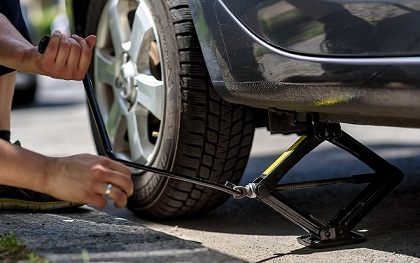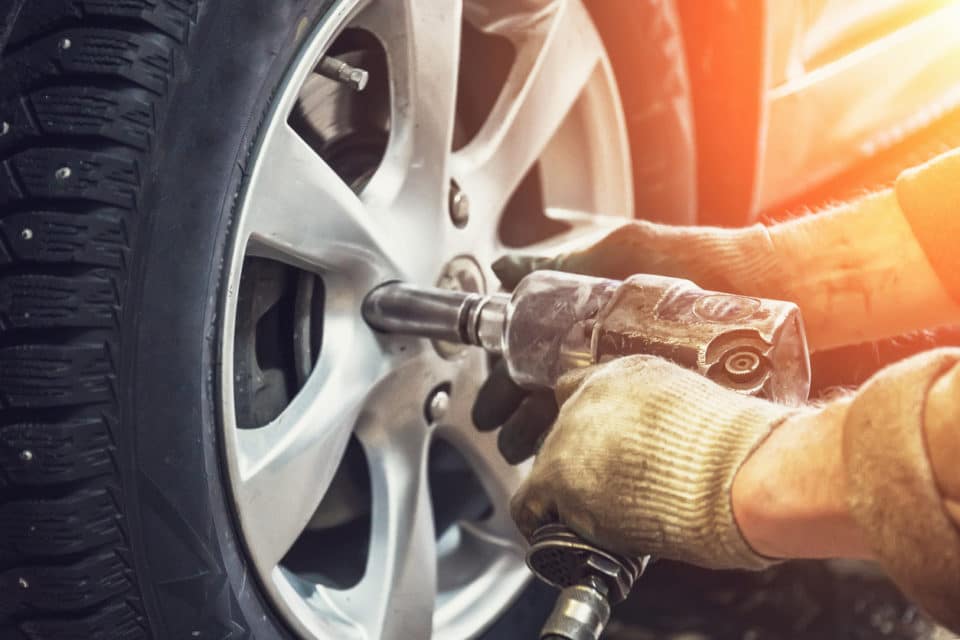How To Change Tire
Difficulty: Easy
Duration: 5–10 minutes
How often: Once every month plus before and after road trips
Maintaining good tires help improve your car’s gas mileage, improve tire life, and give a smoother ride. It is vital that you consistently inspect your tires to make sure that your vehicle is safe. Three key aspects to watch for are wear, inflation and pressure. This guide will help you monitor these conditions and help your vehicle operate at its best.
Things you’ll need from your garage or your local Sothern Auto Parts Store:
- Tire gauge
- Tread depth gauge
- Penny

Check for Tire Wear
Check your tires for wear at least once a month as well as before and after road trips. There are many factors that contribute to wear on tires. Your tires’ treads will help determine whether it is time for tire adjustments or complete replacements. The tires are the only contact that your car has with the road, so proper maintenance is key to driving safely.
Step 1
Locate a tread groove toward the center of your tire. Place the metal rod of the tire depth gauge in the groove and push the casing down until it touches the tire. Check the tire reading. If it reads 2/32 or less, you should replace your tire.
Step 2
Continue checking the grooves of your tires, checking four points per tire. Compare the measurements to make sure that the tires are wearing evenly. If they are not, this may indicate a problem with your tires or suspension system.
Step 3
If you do not have a tread depth gauge, you can use a penny. Insert the penny into the groove of the tread with Lincoln’s head face down. If you see the top of Lincoln’s head, you should replace your tire.
Step 4
Check your tire for punctures, nails and weathering conditions, or any unusual wear, such as cupping or uneven wear on the edges that indicate a balance or alignment issue. These conditions will have to then be diagnosed and repaired by a professional.

Check Tire Inflation and Pressure
Before you begin to assess your tires, make sure that they are cool. This ensures a more accurate reading, as warmer tires are more inflated. Tires automatically lose pressure through time and bumps and hard surfaces you encounter while driving. Each tire is different, so it is important to check your owner’s manual for the recommended tire for your vehicle.
Step 1
Make sure your tires are cool prior to inspection. Park your car on a flat surface to get the most accurate reading.
Step 2
Remove the cap from the valve of your tire. Press the tire gauge on the valve to get the proper reading. Compare this reading with the recommendation from your owner’s manual. There is also a sticker near the driver’s door on most vehicles that will give you the proper inflation pressure. You may have to press hard to ensure that you have it inserted correctly. If you hear any air escaping, the gauge is not in accurately.
Step 3
If you determine that your car needs air, insert the air pump into the valve and fill it to its recommended pressure level. If you have over-filled, don’t worry, you can release air from your tire by pushing on the metal stem in the center of the valve with a fingernail or pen tip. Most tire gauges also have a way for you to let air out of the tire.
Step 4
Once the air has been adjusted to the proper level, replace the cap and check the remaining tires in the same fashion.
Important Tips
- Check your tires for wear at least once a month and before and after road trips.
- When checking tire pressure, make sure tires are cool and your car is parked on a flat surface to get the most accurate reading.
- Check your owner’s manual or ask your local mechanic for tire rotation recommendations.
- Note: Consider inflating your tires with nitrogen. Offered in many auto care facilities, nitrogen increases your fuel economy, extends tire life and helps your vehicle ride more smoothly. Nitrogen is an inert gas with a larger molecule than oxygen. It does not come through the tires as regular air does over time. It runs cooler and does not fluctuate with temperature. Regular air changes 1psi for every 10-degree temperature change, meaning a 40-degree change from morning to afternoon will have a 4psi difference just during the day. In many cars, this will cause the Tire Pressure Monitoring System light to indicate low pressure.
- If you have nitrogen in your tires, you will need to take it back to the place you had it put in to add air when needed, but this is very seldom. The advantages of nitrogen include a 3–5% increase in mileage in many cases, 10–15% increase in tire life, and a much smoother ride! If there is nitrogen installed in the tire a GREEN cap will then be on the valve stem, this is the indication that nitrogen is in there.
